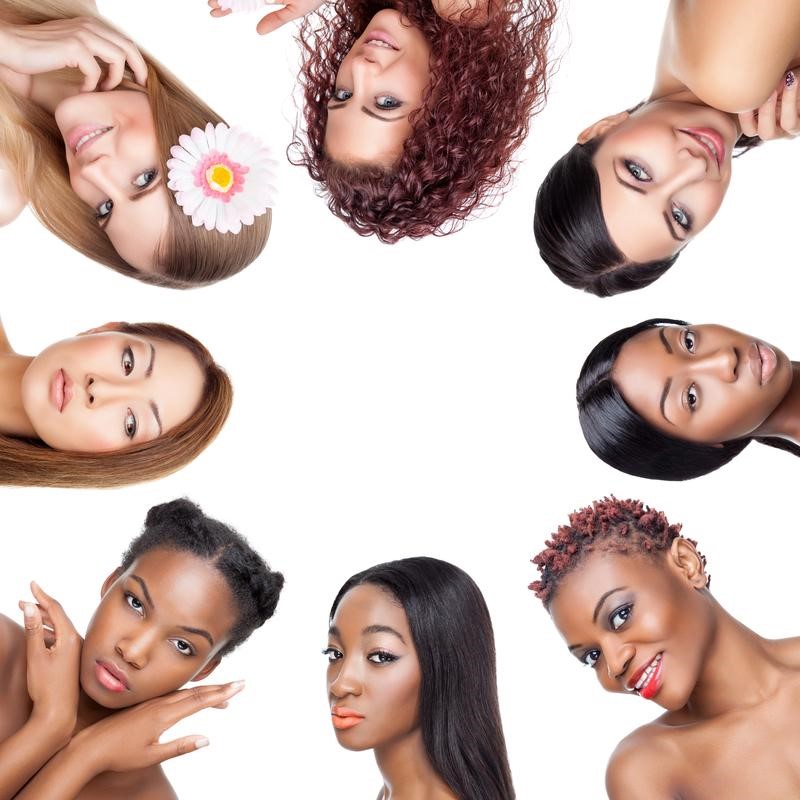Around the world, the perception of what makes someone beautiful changes with geography and culture. Each culture has its own beauty standards.
The Western ideal of beauty is the dominant standard to which many around the world aspire (big eyes, large breasts, long hair and slender frames). Because of the unrelenting pressure on women to align with Western beauty standards, many women and girls view their physical appearance as a source of distress.
This is not only the case in Western cultures. It has become a global problem.
South Korea
One mark of beauty in South Korea is to have a youthful look that begins with a small face.Koreans attempt to achieve a v-shaped face with unpronounced jawlines and a pointy chin because Asian people have smaller eyes which makes their faces appear larger.
Many Koreans turn to plastic surgery to force their faces to fit their beauty perceptions. Even with all the severe risks of procedures such as double jaw surgery, it is estimated that more than 5,000 people in South Korea undergo this procedure annually.
This is in addition to double eyelid surgery, which attempts to make the eyes appear larger. It also comes with risks, one is damage to the eyes or even blindness.
Koreans turn to dieting pills and plastic surgery to achieve the extremely slim figure that is considered beautiful. Sadly, they have seen a dramatic increase in eating disorders.
These measures represent the extreme efforts that many in South Korea undertake to align with a perception of beauty that goes against what is natural for them.
Middle East
In many Middle Eastern cultures, women are expected, and sometimes required, to go to great lengths to appear beautiful to their husbands.
One of these great lengths, among others, is a hymen repair procedure Because it is extremely important for a woman’s hymen to be intact on her wedding night as it is the perceived evidence of virginity,
In terms of physical beauty, Middle East cultures particularly define it by the face; eyes, lips and cheeks.
Middle Eastern women are less likely to attempt to align with traditional Western beauty standards; instead, they attempt to achieve a perfect version of the ideal Middle Eastern standard.
Latin America
In Brazil, beauty is the culture. Being perceived as beautiful is considered critical. The beauty ideal here is focused on lightly tanned and hairless skin, long hair and large, light-colored eyes.
Butt implants are commonplace in Brazil and other areas of Latin America due in part to the cultural expectation to have a curvy bottom half. Yet it iis one of the most high-risk surgical procedures of all the procedures I’ve mentioned so far, with the most devastating risk being a fat embolism which can lead to death.
As a result of this focus on beauty, Brazil is known for its beautiful women. However, the darker side of this coin has lead to increased crimes against women; or what the Portugese women refer to as “rape culture”.
India
The Indian perception of beauty is h2ly correlated with skin color. A woman could be considered beautiful only if she were white or fair and had no specific deformities. One dermatologist notes that more than half of her clients each day come to her for skin-lightening procedures.
Outside of skin color, the Indian beauty standard also includes large eyes, a narrow waist with wider hips, long, black, thick, wavy hair, and full red lips.
Before the influence of Western beauty standards, Indians historically preferred women with curvy, hourglass figures and even a bit of a belly pooch. Now, slim figures are more often seen as a beauty indicator.
But there is the other side of the coin. As recently as the 1990s, Indian psychiatrists have noted that in the past decade, the number of Indian women suffering from disordered eating has increased between five and ten times. Many of these body issues are among Indian girls.
India ranks fifth in the world in plastic surgery with nearly 900,000 procedures annually.
Africa
The varied tribal cultures in Africa do not make an effort to align with the Western beauty standard; rather, they are very distinctly their own.
Beauty is seen as a union of physical attractiveness and good manners or conduct; in other words, a combination of inner and outer beauty. In general, youthfulness, skin hues and full faces tend to predict what is considered attractive in African female faces.
Heavier women are considered attractive in traditional African tribal culture because low body weight can be seen as an indicator of illness and disease.
Tribal marks are also a large part of what is considered beautiful, as well. These marks differ between tribes as a means of identification. Other tribal practices include creating long earlobes with heavy jewelry and stretching the bottom lip by making a hole in the lip and inserting wooden or clay plates.
A lack of electricity in many sub-Saharan countries leaves many tribes without exposure to media and advertising. Looking at how little these people are influenced by Western beauty standards really puts a spotlight on just how influential media of all sorts can be.
The bottom line goes right back to what I shared in my previous post : Beauty is all about perception, and our perceptions are shaped by multiple factors—in this case, where we are on the planet!
